A short while ago, a young man who follows The Coorg Table® wrote in to say that he had tried out and enjoyed most of the recipes posted so far. He also made a request for a recipe for kaad mange curry adding that his grandmother, who used to make this curry for their family, had passed away. And with her went the recipe for a treat that the family, loved, still held in their taste memories and associated with her – but did not know how to cook. Anish Thimmana’s poignant story reminded me of many similar ones I had heard, and set off a whole train of thoughts in my head. So maybe this post will be a little longer than usual.
It reminded me of how we often take people and things we love for granted, for that very reason – because we love them, we think they will last forever. It reminded me of the importance of learning from an older generation, from their fund of knowledge of the land, cooking techniques, experiences and stories that are so valuable and unique, but all too often disappears with them, unless we record everything. It also set me thinking about many much-loved ingredients gathered from the wild, unique to Coorg, that we have taken for granted for centuries. But can we afford to think that we will always have them?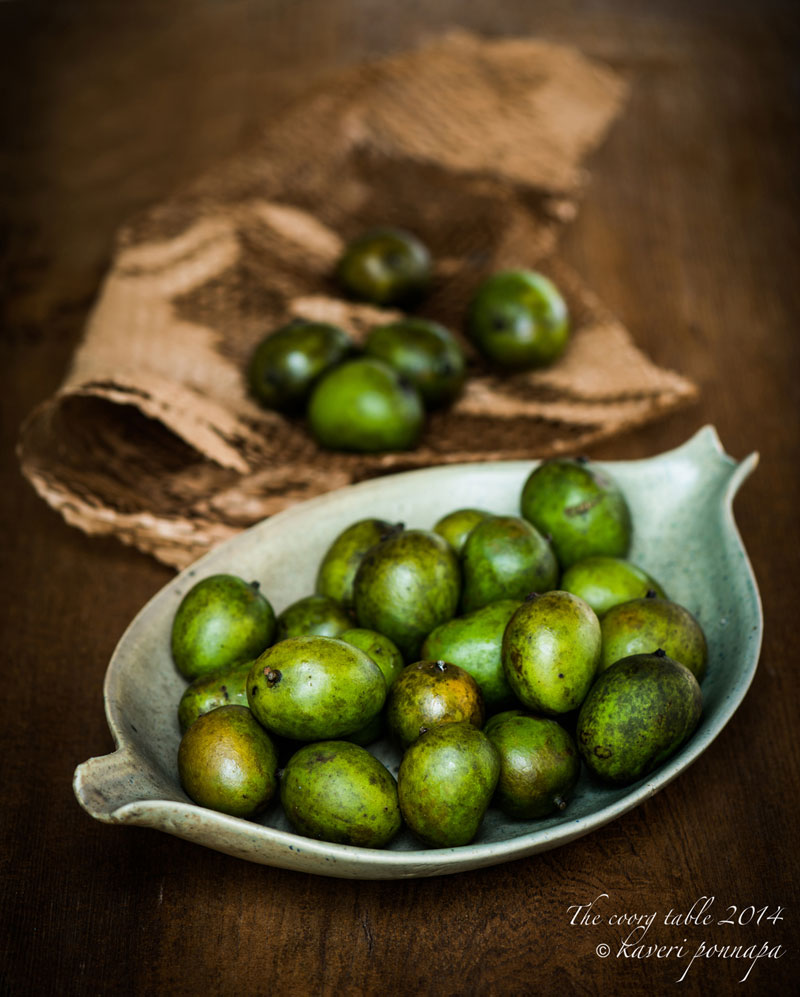
Wild mangoes are one of the seasonal treats we love in Coorg, and look forward to, year after year. Rounded and plump, with a feisty, peppery flavour, their marbled green skins covered with minute, dark flecks and pinprick dots, never evenly coloured, showing not more than a reluctant reddish blush in patches, wild mangoes once turned up in our kitchens in abundance. They grew on majestic, towering trees and the supply of fruit seemed inexhaustible. Every village had a famous wild mango tree, monumental, prolific, that produced fruit enough for every home. The early wave was collected, and quickly made into a hot and salty pickle before the stones grew too large and hard. Batches were preserved in brine for the rest of the year, and later, ripe mangoes, similarly preserved in baranis were put away, and brought out at a wedding or feast, to be made into a curry.
But the sweet, ripe mangoes were what we waited for. Peeling a pile of wild mangoes, the air is scented sharp and sweet, and juice drips, collecting in a waiting vessel. When your thumbnail pierces the top of the little fruit, there’s a beautiful contrast between the sharp young green of a layer of inner skin and the pale lemon yellow flesh. A dish of kaad mange curry has a certain magic that nothing else can match: is it the sweetness of jaggery, combined with red chillies, and the unique taste of these beguiling mangoes, a taste and fragrance drawn from the soil of the land? I could never tell, and I still cannot. But the curry has a flavour that cannot be matched or replicated by any cultivated fruit; every last drop is scraped off the plate, and everyone lingers over the seeds, drawing out sweetness, scent and emotions.
 We still wait for them season after season… and the numbers dwindle. With the relentless development of the land that we are seeing these days, there is so much that is being lost, but we don’t seem to notice, because the gifts from the land continue to come in. Clearing tracts of land indiscriminately sweeps away so many species of wildflowers, orchids, ferns, lichen, wild berries and fruit which generations enjoyed. When we visit friends in the villages of Coorg, we enjoy wild fruits like karmanji panne; kotte panne; sweet, green kumme panne; kunde narale; gumatte panne and so much more. People recall how, as children, they would take the cattle out to graze, and never go hungry – there was such bounty on trees, creepers and bushes. Since children rarely herd cattle these days, a friend does a wonderful thing – he takes his children berry hunting during the summer holidays, in April and May, and again at the end of the year, when the countryside is bursting with fruit and berries, so that they in turn become familiar with what the hillsides have to offer. Wild, leafy greens – kolike thoppe; pana thoppe; thaate thoppe; onti yele thoppe; kingiri mulle thoppe; muttli thoppe and scores of others – once so much a part of our food traditions, made into chutneys and stir-fried, full of valuable nutrients, invaluable for tiding over the monsoon months, have begun to peter out of our diets, and the environment too. I was listening to a friend’s daughter, who currently lives in one of the North Eastern Hill states tell her mother that there were plenty of the familiar Coorg greens available in the markets, and growing wild on the hillsides. Once abundant, now becoming elusive even in rural areas, my friend, only half joking, asked her daughter to send some across to her kitchen in Coorg! Plants, according to experts, are being lost at the rate of three species an hour and the valuable knowledge of these wild foods, gathered over so many generations, a knowledge that forges our deep connection with the land, is also shrinking.
We still wait for them season after season… and the numbers dwindle. With the relentless development of the land that we are seeing these days, there is so much that is being lost, but we don’t seem to notice, because the gifts from the land continue to come in. Clearing tracts of land indiscriminately sweeps away so many species of wildflowers, orchids, ferns, lichen, wild berries and fruit which generations enjoyed. When we visit friends in the villages of Coorg, we enjoy wild fruits like karmanji panne; kotte panne; sweet, green kumme panne; kunde narale; gumatte panne and so much more. People recall how, as children, they would take the cattle out to graze, and never go hungry – there was such bounty on trees, creepers and bushes. Since children rarely herd cattle these days, a friend does a wonderful thing – he takes his children berry hunting during the summer holidays, in April and May, and again at the end of the year, when the countryside is bursting with fruit and berries, so that they in turn become familiar with what the hillsides have to offer. Wild, leafy greens – kolike thoppe; pana thoppe; thaate thoppe; onti yele thoppe; kingiri mulle thoppe; muttli thoppe and scores of others – once so much a part of our food traditions, made into chutneys and stir-fried, full of valuable nutrients, invaluable for tiding over the monsoon months, have begun to peter out of our diets, and the environment too. I was listening to a friend’s daughter, who currently lives in one of the North Eastern Hill states tell her mother that there were plenty of the familiar Coorg greens available in the markets, and growing wild on the hillsides. Once abundant, now becoming elusive even in rural areas, my friend, only half joking, asked her daughter to send some across to her kitchen in Coorg! Plants, according to experts, are being lost at the rate of three species an hour and the valuable knowledge of these wild foods, gathered over so many generations, a knowledge that forges our deep connection with the land, is also shrinking. 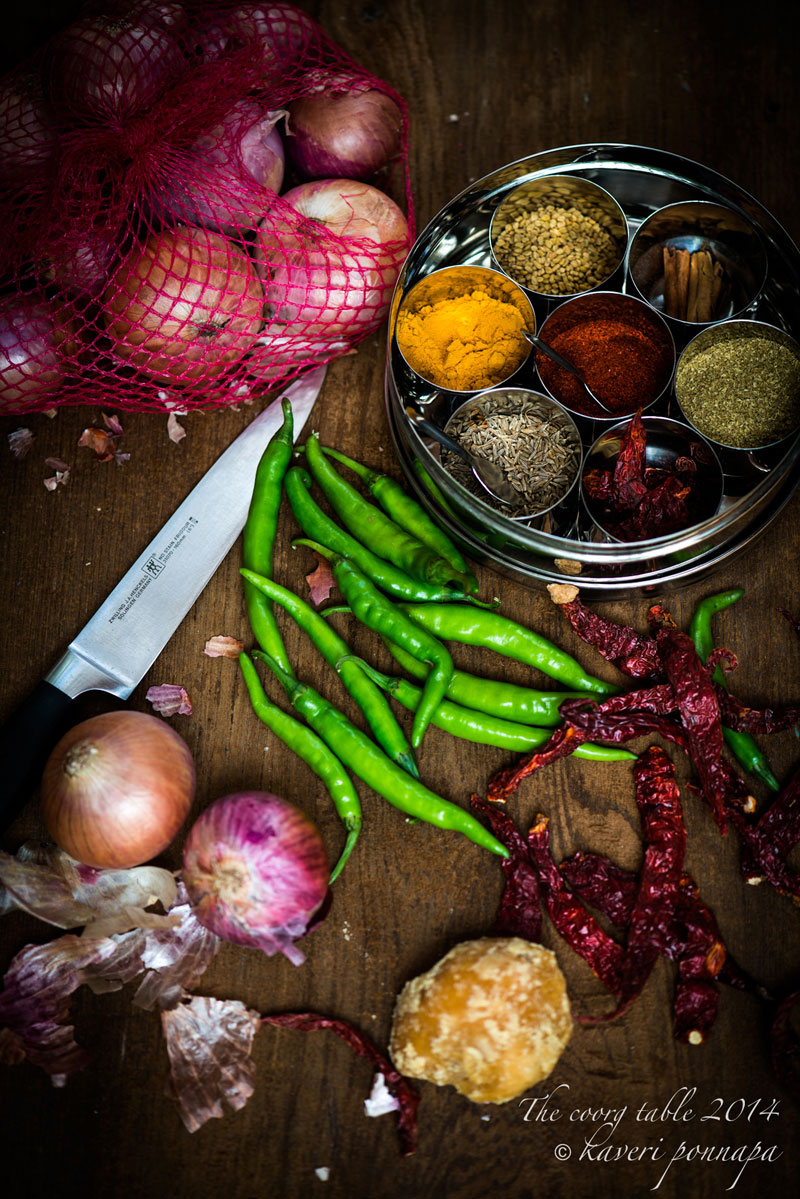 The exceptional wild mushrooms of Coorg now arrive in a sad trickle, compared to the basket loads of even 25 years ago: the price we pay for the extensive use of pesticides and aggressive farming techniques. Some rare species have retreated to wild and difficult to access parts of the district, the only places where they can thrive, undisturbed. And when was the last time you ate a curry of fresh, sweet-fleshed Baré meen (a fresh water fish), caught or shot in unpolluted waters? And wild game has disappeared from our tables altogether. In a rice cultivating culture like ours, delicious and valuable foods – like koile meen (a tiny fish found in flooded paddy fields and streams), crab and wild greens – can be found in and around our fields. Wild foods make nutritional sense too: studies the world over have shown they are extremely valuable sources of concentrated amounts of vitamins and minerals, which can rival and supplement cultivated foods in many ways. Our food in Coorg has always been local, seasonal and sustainable, now a global mantra; foraging for mushrooms, ferns, wild berries and leaves, so much a part of our everyday lives, is now endorsed by some of the most famous restaurants in the world, like Noma, in Copenhagen: it would be tragic to allow this to be lost.
The exceptional wild mushrooms of Coorg now arrive in a sad trickle, compared to the basket loads of even 25 years ago: the price we pay for the extensive use of pesticides and aggressive farming techniques. Some rare species have retreated to wild and difficult to access parts of the district, the only places where they can thrive, undisturbed. And when was the last time you ate a curry of fresh, sweet-fleshed Baré meen (a fresh water fish), caught or shot in unpolluted waters? And wild game has disappeared from our tables altogether. In a rice cultivating culture like ours, delicious and valuable foods – like koile meen (a tiny fish found in flooded paddy fields and streams), crab and wild greens – can be found in and around our fields. Wild foods make nutritional sense too: studies the world over have shown they are extremely valuable sources of concentrated amounts of vitamins and minerals, which can rival and supplement cultivated foods in many ways. Our food in Coorg has always been local, seasonal and sustainable, now a global mantra; foraging for mushrooms, ferns, wild berries and leaves, so much a part of our everyday lives, is now endorsed by some of the most famous restaurants in the world, like Noma, in Copenhagen: it would be tragic to allow this to be lost. 
Many of the things I write about are still available, but everyone will agree, in quantities that diminish alarmingly every year. Trees are threatened too: our cuisine would not be the same if we did not have jackfruit, wild mango and the panapuli tree (Garcinia gummi gutta) to gives us kachampuli, our own, unique vinegar. The canopy of shade that covers our coffee estates is now a monoculture of silver oak – what a dismal change from the varied, indigenous trees of our childhood, each with its individual character and unexpected gifts. Carlo Petrini’s Slow Food Movement and small groups of concerned people across the world are trying to halt the loss of local food, fruits, and vegetables, creating seed banks, rescuing indigenous species from oblivion. If we paused to think of the wide-ranging selection of treats we get from our generous land, and see how it defines our cuisine and culture, we’d realize that if we were to lose these wild foods, our distinctive culinary heritage too, would change forever.
So as I cook my kaad mange curry this year, I dedicate this post to Anish’s grandmother, and all the generations of Coorgs, both men and women, who created perfect recipes from the abundance that our rugged land had to offer. They acquired the knowledge, cooked with love, passed on traditions and preserved the land and its wild foods in their time – it’s our turn now.
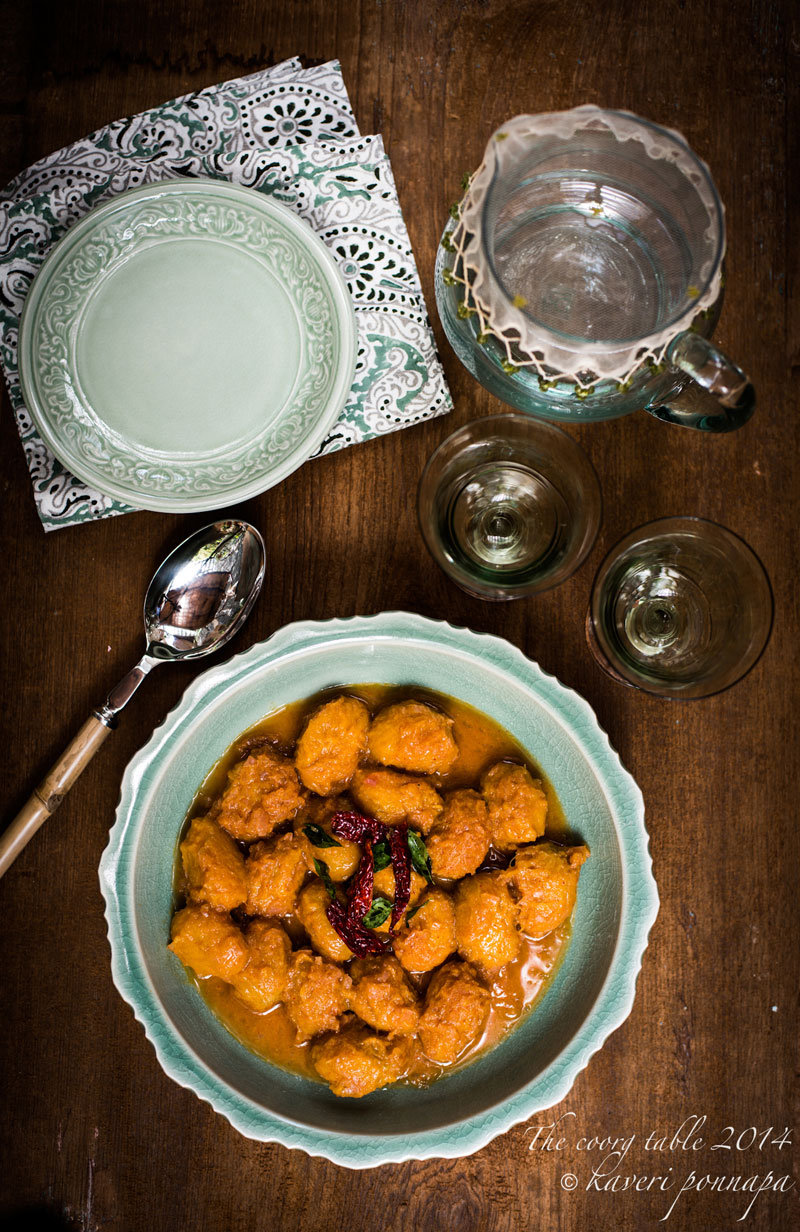
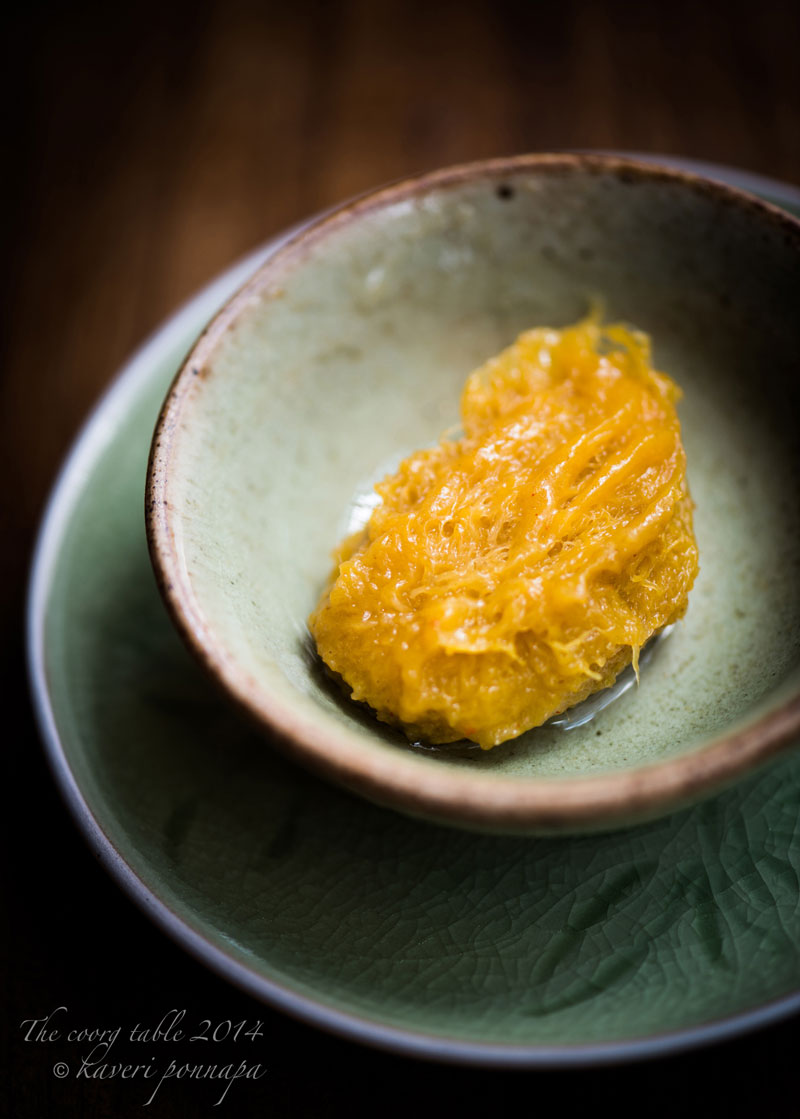
Botanically Speaking: for those interested, here are some of the botanical names for the wild fruit and leafy greens. If anyone would like to share their knowledge of wild greens, fruits and berries, please do write to me, I would welcome any additions and recipes.
Karmanji panne: Carissa inermis C.gangetica;Kotte panne: Zizyphus rugosa; Gumatte panne: Physalis peruviana; Kolike thoppe: Alternanthera sessilis; Pana thoppe: Drymaria cordata; Thaate thoppe: Cassia thora.
Thank you for visiting this page. If you read something that you enjoy, or see an image that you like, please take a moment to write a response. Do look out for the recipes of all the food featured here in my upcoming cookbook.
Image Credits: Nithin Sagi
All Food Styling: Kaveri Ponnapa

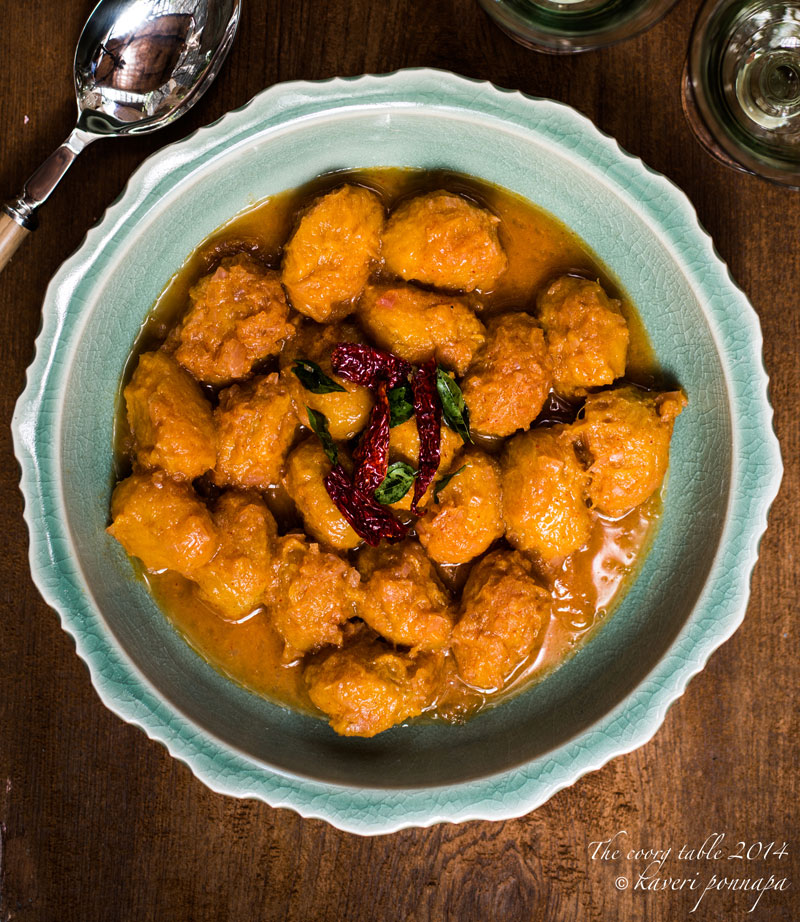
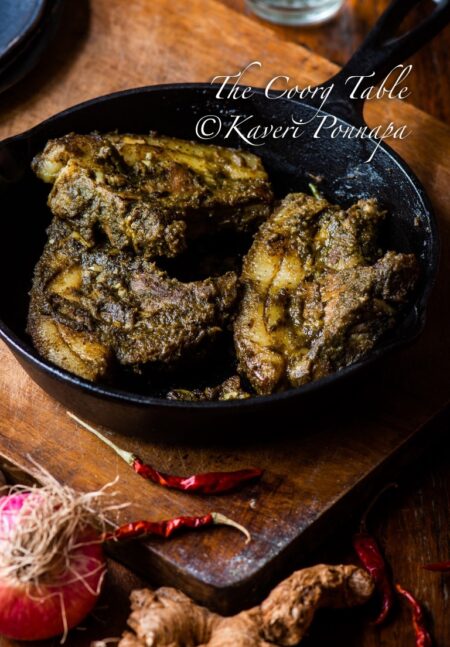
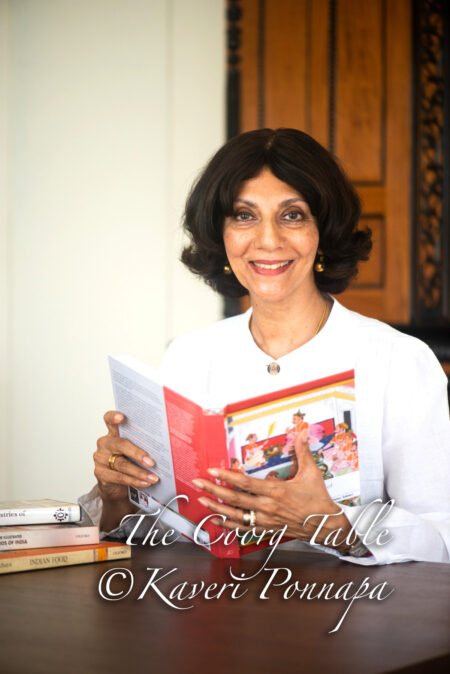
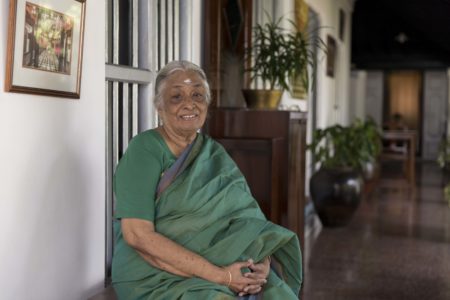
Dear Kaveri, I absolutely loved reading this piece. It is so well written and has evoked so many memories in all the people who have read it. I greatly admire the pictures and the cutlery! In this piece, you have spoken about a problem that we are all facing of losing out on our traditions, practices and the bounties of nature. I wish that collectively we can all do our bit to preserve what we are fast losing. I would greatly appreciate it if you would let me know of any efforts that are being made to preserve the many trees which are becoming endangered. I would like to a part of it. Thank you for this excellent post!
Hello Neetu, thank you very much for taking the time to share your thoughts on this page. I am very grateful that this post has touched a chord with you, and even more, that you are willing to do something about it. There are so many thoughts that I have on the topic that I am going to email you, rather than try and answer you here. But one of the things I am excited and hopeful about, is the number of young Coorg people, like you, who write and get in touch, all looking to do something concrete. Thank you for reading this blog, and I hope you will keep checking the pages for new posts -even more, I hope that, collectively, we can all work to keep our heritage alive. Warm wishes. Kaveri
Thanks a lot for the recipe of “Kad mange kari” .
Welcome to The Coorg Table, Kuttappa. I hope you’ll try out many of the other recipes too, they are all delicious and simple to make. I wonder which version of the kaad mange curry recipe you tried – both of them taste very good.Thank you for writing in. Best wishes. Kaveri
In addition to the food what i love is the lovely cookware and tableware you use to present your dishes.Where do you get such lovely cookware.
Hi Madhavi, welcome to The Coorg Table. I’m really happy you like the food, it gives me great joy in sharing it with people. The tableware is a multi-generational story! My grandparents,both sets, had absolutely lovely china in their homes. One pair of grandparents used everything they had, every day, changing sets at each meal, regardless of breakages. The other pair had very pretty, delicate stuff simply overflowing from an enormous china cupboard, and more robust but pretty stuff for a houseful of grandchildren. So the idea of having good crockery was stamped on my imagination, and I have been collecting from all over the world, for years. It might not make a difference to the taste of the food, but it certainly does to the general enjoyment! Warm wishes. Kaveri.
On June 1st, I took part in Coorg’s first Trail Run – The Coorg Escapade. As meet and greet dinner for the participants at the Nadikerianda Ancestral Home, I stumbled upon this curry. I remember gulping down more than a couple, although we were told to eat lite before the run. I came back home just thinking about how much I regretted not knowing more about this curry. I was so submerged in relishing the taste of this curry, that I din’t even ask the name of it. I just asked people “what was that Mango thingy that tasted so delish?”. I came home telling my parents how much I loved & enjoyed eating it. I went on telling how it was the best mango/curry I had ever tasted. My parents decided to see me suffer less, so they asked me if they could re-create it for me. Unfortunately, when they asked me to describe the taste – all I could say was mangoes, sweet, tangy, mangoes & more mangoes.
So, from the bottom of my heart, THANK YOU, Kaveri. You’ve made me very very VERRRY happy. 🙂
Regards
Sindhu
Hello Sindhu, I’m sure that you ran very well, powered by Kaad Mange Curry! It has very special flavours, so I’m not surprised that you kept dreaming of it for so long, and am happy you found it on The Coorg Table. Enjoy the curry, when the season comes around again. In the meanwhile there is a delicious Mange Mor Pajji recipe on my website, which you can make with other sweet mangoes, not necessarily wild ones. Do try it out, and look out for The Coorg Table on Facebook. Warm wishes, Kaveri.
Thank you very much for your very authentic Coorg recipes I was looking for. Thanks. To this wonderful
technology , we need not worry our friends for the recipes, which sometimes they do not want to share.
Many thanks for this transparency.
Hello Guna, welcome to The Coorg Table. The recipes here are authentic indeed,and much-loved, as they are all family recipes, handed down the generations. It’s quite understandable that sometimes, people don’t want to share, as traditional recipes are a precious legacy,full of sentiment and emotion, and they would like to keep them within the family. The way I look at it is – really great food is meant to be shared, and that is what I want to do here. I am sure that all those who visit this page will value these recipes, and give credit to the blog whenever they use them. Do try the recipe for Wild Mango Pickle too, it’s delicious! Enjoy! Warm wishes, Kaveri
What an excellent post! I so much enjoyed reading it. Do not know when there will be a chance to put together and try the recipe, but meanwhile I savour the written description! Wonderful…thanks.
Hello Ashish, thank you very much for visiting this page. Our wild foods are so special, they deserved a post dedicated to them, and I am so glad you enjoyed reading this one. Best wishes, Kaveri
A friend was good enough to bring me some kaad mange from Coorg and I just had to make some mange curry. As usual when stuck for advice on Coorg food, I turned to you — and with spectacular results! Just peeling them was a delight, lots of finger licking but thanks to your warning we didn’t lose too much juice. And the curry was memorable — now I can’t wait for another batch of kaad mange, to try out all the variations in the kartha masala. Thank you, thank you and keep the wonderful posts coming! Saras
Hi Saras, I’m absolutely delighted that the recipe worked so well for you.Now I hope a second batch of kaad mange arrives before the season comes to an end, so that you can try out other spice combinations in the curry. Either way, kadd mange curry is a winner and you can always drop by at a table we both know of,for second helpings! xoxo Kaveri
Yummy :))thanks for taking me back to memory lane…good old days.wild mango ….my all time fav ….:))good luck madam…good job…
Hello Kaushi, thank you for your comments and good wishes, it is always nice to hear from someone about the posts. Please do keep visiting The Coorg Table on this page – you can also follow it on Facebook. Best wishes, Kaveri.
Hi Kaveri, Totally enjoyed reading this mouth watering recipe. Though I haven’t experienced the taste of kaad mange so far, it did remind me of “vadu maanga”, a spicy pickle popular Tamil Nadu or tamilian’s home – and is supposed to be the ultimate combo with curd rice!! Some like the spicy sauce more than the tender mango it self. In vadu maanga (or mavadu) skin is not peeled off. A spicy paste is made with the usual suspects – chili powder or chili, mustard, rock salt, asafetida- gets mixed in a bowl with tender mangoes and allowed to be soaked for a week to ten days.
More importantly, your recipe triggered nostalgic thoughts as the best tender (vadu) mangos are available in a place called Azhagal Koil near Madurai (where I grew up). This place / deity of this temple is closely tied to the annual Chitra festival that happens in Madurai, every April. So when ever I think vadu manga, I am reminded of Azhagar Koil, Madurai, chitra festival etc…..Thanks a lot for bringing back those wonderful memories. Looking forward to taste kaad mange in the near future.
Regards
Balaji
What a wonderful chain of thoughts the ‘kaad mange’ has triggered, and thank you so much for sharing them here,Balaji. The link between tender mangoes and the Chitra festival sounds absolutely fascinating, and if you have the time, do share more details on this page,I would love to hear how the fruit is used. It is so interesting that this most Indian of fruits has evoked so many different memories for different people, and I hope more people will share their thoughts. Best wishes, Kaveri
Seeing this picture brings back old memories. My mother used to make a similar dish called Kanda kairi . It’s a PARSI dish. Ripe small mangoes r cooked with lots of onion n masala s. It had a sweet sour n tangy flavour. Had forgotten about it . Thanks for putting up the picture.
Hello Pervize, thank you for sharing this and describing the dish,it sounds delicious. I am so happy the picture reminded you of your mother’s curry.Foods we’ve tasted and loved always seem to be lodged somewhere in our memories. I hope you can recreate that special curry, and enjoy it again. Best wishes,Kaveri.
love the kaad mange curry..its one of my favorite coorg delicacies..i can actually eat about 5-6 at one go:) reading your recipe and looking at the beautiful mange pics my mouth is watering! looking forward to cook it..thanks for sharing.
Hello Binny,most of us go quite crazy about kaad mange curry, and end up eating quite a lot – well, far to much, usually.Next batch cooked will be shared with you for sure! xo Kaveri
I love kaad mange curry and pajji made with this……. Pictures are so lively and my mouth is watering….WoW…..Mange currry………There are lot of memories hidden with these mangoes……..Thanks for bringing my sweet memories back……Keep posting……….Thank you………
Hi Kaverappa, thanks very much for sharing your thoughts here.Yes, there are so many memories in those mangoes, and I hope this dish brings back different associations for each one of us, of times past and present. Do keep visiting these pages. Best wishes, Kaveri
Hi Ma’m, i was awaiting for this recipe and it finally came a day before my grandmum’s birthday! Thanks a lot for this. Reading all this takes me back to my childhood days and how meticulously my grandmum used to cook to make this a lip smacking curry! 🙂 Thanks once again.
It looks like this was really meant for your Grandmother, Anish, and I think it was the sincerity with which you asked for the recipe that made this a special post in every way. I am really so thrilled to hear that it’s her birthday today. Enjoy the kaad mange curry, and now you have the recipe to keep! Best wishes,Kaveri.
Hi Anish, to answer your query – yes,you can most certainly add ‘kartha masala’,many people do. Here I have given my mother-in-law’s recipe, and she preferred to use 2 tsp of toasted cumin(rather more than usual). Other recipes I have from my aunt and Grand mom use 1tsp mustard seeds;1 tsp cumin;1 tsp coriander seeds;1/4 tsp fenugreek, toasted and powdered.If you do that,don’t grind the masalas with the onion, but roast, powder and add them with the mangoes into the curry, and allow them to cook with the curry. Best of luck! Kaveri